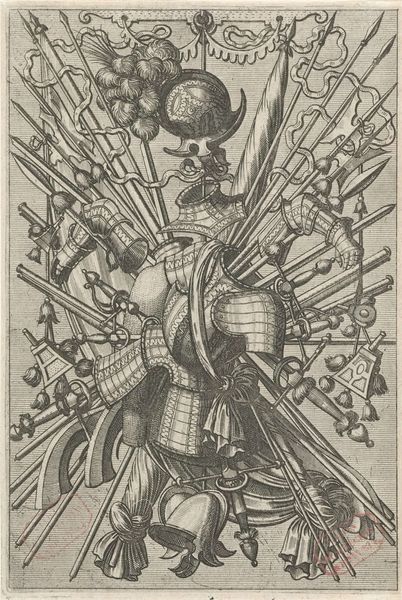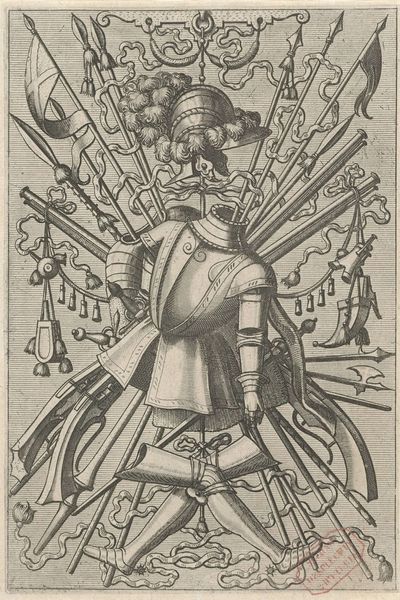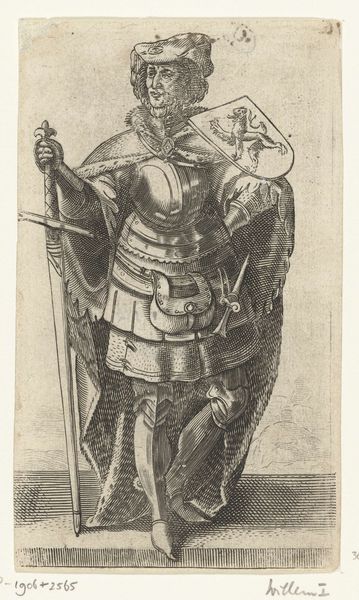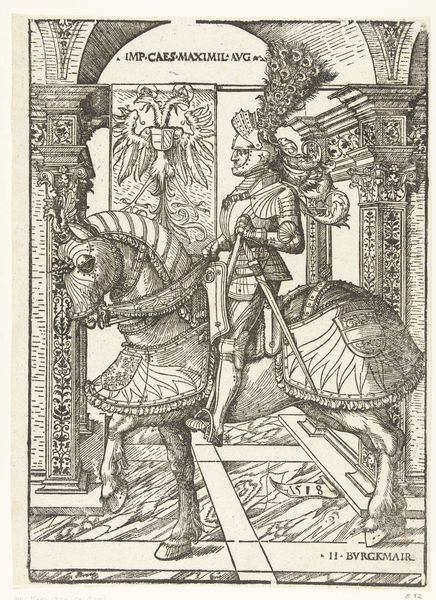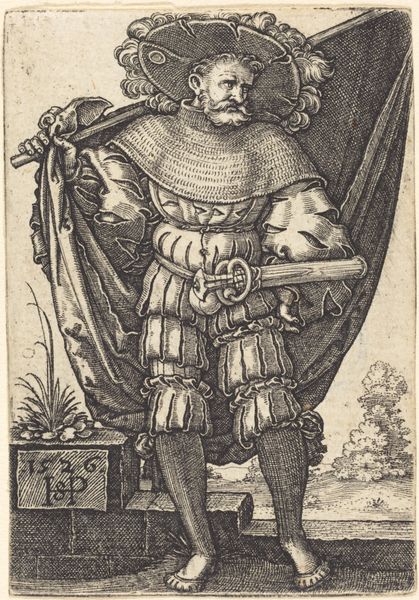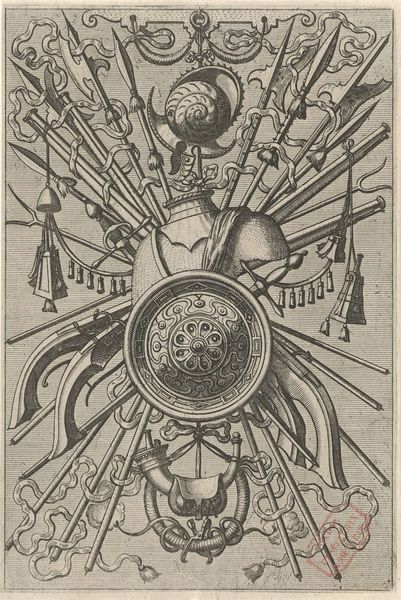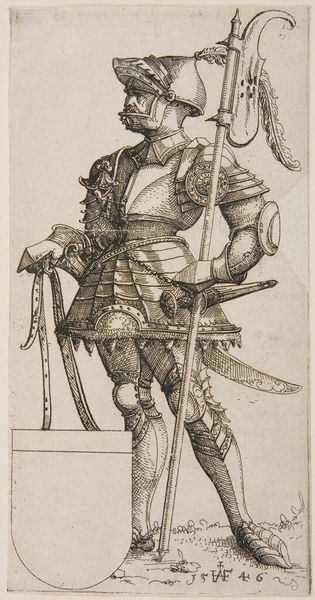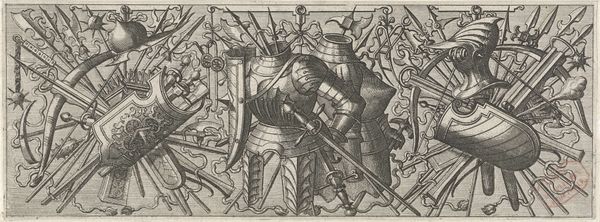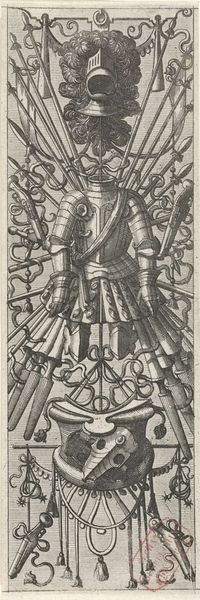
Vlakdecoratie, bestaande uit een wapentrofee 1558 - 1572
0:00
0:00
johannesoflucasvandoetechum
Rijksmuseum
drawing, print, ink, engraving
#
drawing
#
pen drawing
# print
#
pen sketch
#
mannerism
#
11_renaissance
#
ink
#
pen work
#
history-painting
#
engraving
Dimensions: height 183 mm, width 124 mm
Copyright: Rijks Museum: Open Domain
Editor: So, this is "Vlakdecoratie, bestaande uit een wapentrofee," made between 1558 and 1572 by Johannes or Lucas van Doetechum. It’s an engraving, currently at the Rijksmuseum. There's this... organized chaos to it, this dense layering of weapons and armor. What narratives or histories do you see embedded in this piece? Curator: That's a keen observation about the organized chaos. I see it as a visual representation of power, but also vulnerability. The assembled weaponry speaks of military might and dominance. But consider the period. These trophy arrangements were often commissioned to commemorate victories, but who benefitted and who suffered? Were these trophies truly celebratory for all members of society? Editor: I hadn’t thought about that! The flip side to victory, the conquered and displaced. So, the artist is making a statement about the complexities of power? Curator: Perhaps not overtly, but we can certainly read it that way now. The image serves as a potent reminder that history is never monolithic. During the Renaissance, rising empires employed art to validate, strengthen, and communicate their message. The artist shows the military paraphernalia – breastplates, guns, lances, and drums - yet those weapons imply control and forced allegiance. This makes us reflect on the role of art as not just decorative, but ideological. What do you think? Does the context change your view of the artwork? Editor: Absolutely. The trophy of arms, on the surface seems purely celebratory. Thinking about its function, or *intended* function, versus its real-world implications of violence, completely changes the way I see it. I was focused on the artistic aspects and how impressive it looked, but it does feel like I missed a darker point. Curator: Exactly. By acknowledging these dualities we avoid complicity in art’s possible role as propaganda. Always keep asking: Who is included in the narrative, and who is erased? That will greatly affect your experience of the artwork.
Comments
No comments
Be the first to comment and join the conversation on the ultimate creative platform.
